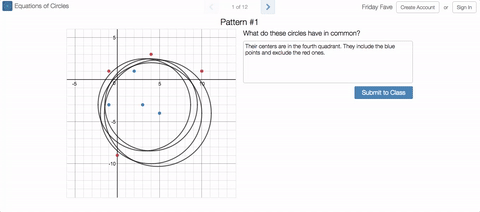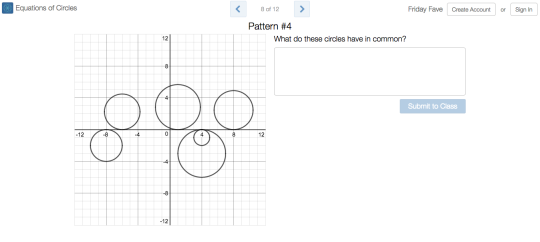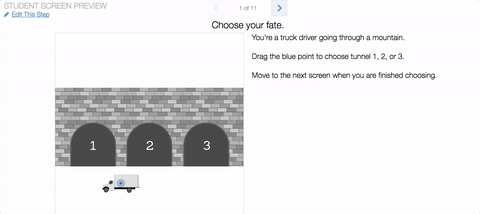Friday Fave for December 16
This is the last Friday Fave for 2016, as the Fave and colleagues are taking
some time to rest and recuperate in preparation for a new year, new features,
new activities, and above all new learning.
2016 finishes with a recently upgraded activity that began life as a really nice set of challenges from Lauren Olson, and is now a substantially different beast incorporating the best of what we’ve learned in a year-and-a-half of Activity Builder lesson design. The Friday Fave points you to Circle Patterns.
In the original, students were given the task of writing equations for circles that include some points and exclude others. The update asks students what a set of circles has in common, then challenges them to graph a new circle that also has this characteristic.

We vary the properties of the circles in ways that give students interesting things to notice, and classrooms interesting things to talk about. (The Friday Fave was delighted to notice itself stopping and thinking for a while about what these circles might have in common, for example.)

Legitimate challenges that students can view, and then solve, from several perspectives make Circle Patterns a true Friday Fave.


